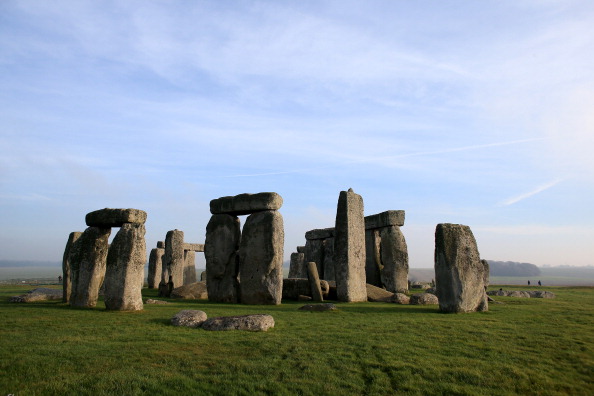Historian suggests Stonehenge was platform for 'an ancient Mecca on stilts'


Former museum curator Julian Spalding believes we've been looking at Stonehenge all wrong.
Spalding has proposed that Stonehenge wasn't meant to be viewed from Earth-level, but was actually a platform where people could elevate themselves to worship deities. The platforms, according to Spalding, would elevate religious leaders, bringing them closer to the gods.
"In early times, no spiritual ceremonies would have been performed on the ground," Spalding told The Guardian. "The Pharaoh of Egypt and the Emperor of China were always carried — as the Pope used to be. The feet of holy people were not allowed to touch the ground."
The Week
Escape your echo chamber. Get the facts behind the news, plus analysis from multiple perspectives.

Sign up for The Week's Free Newsletters
From our morning news briefing to a weekly Good News Newsletter, get the best of The Week delivered directly to your inbox.
From our morning news briefing to a weekly Good News Newsletter, get the best of The Week delivered directly to your inbox.
Spalding added that Stonehenge, which was built between 3,000 and 2,000 B.C.E, may have served as "an ancient Mecca on stilts." He believes the site may have held stairs or ramps to allow religious leaders to reach a raised altar.
Historians haven't found physical evidence to support Spalding's proposal. But they still don't know Stonehenge's purpose, and Spalding's claim is certainly an interesting one. Others believe Stonehenge was a type of astronomical calendar, or a place of (ground-level) worship.
A free daily email with the biggest news stories of the day – and the best features from TheWeek.com
Meghan DeMaria is a staff writer at TheWeek.com. She has previously worked for USA Today and Marie Claire.
-
 Political cartoons for January 4
Political cartoons for January 4Cartoons Sunday's political cartoons include a resolution to learn a new language, and new names in Hades and on battleships
-
 The ultimate films of 2025 by genre
The ultimate films of 2025 by genreThe Week Recommends From comedies to thrillers, documentaries to animations, 2025 featured some unforgettable film moments
-
 Political cartoons for January 3
Political cartoons for January 3Cartoons Saturday's political cartoons include citizen journalists, self-reflective AI, and Donald Trump's transparency
-
 Nobody seems surprised Wagner's Prigozhin died under suspicious circumstances
Nobody seems surprised Wagner's Prigozhin died under suspicious circumstancesSpeed Read
-
 Western mountain climbers allegedly left Pakistani porter to die on K2
Western mountain climbers allegedly left Pakistani porter to die on K2Speed Read
-
 'Circular saw blades' divide controversial Rio Grande buoys installed by Texas governor
'Circular saw blades' divide controversial Rio Grande buoys installed by Texas governorSpeed Read
-
 Los Angeles city workers stage 1-day walkout over labor conditions
Los Angeles city workers stage 1-day walkout over labor conditionsSpeed Read
-
 Mega Millions jackpot climbs to an estimated $1.55 billion
Mega Millions jackpot climbs to an estimated $1.55 billionSpeed Read
-
 Bangladesh dealing with worst dengue fever outbreak on record
Bangladesh dealing with worst dengue fever outbreak on recordSpeed Read
-
 Glacial outburst flooding in Juneau destroys homes
Glacial outburst flooding in Juneau destroys homesSpeed Read
-
 Scotland seeking 'monster hunters' to search for fabled Loch Ness creature
Scotland seeking 'monster hunters' to search for fabled Loch Ness creatureSpeed Read
